News Update
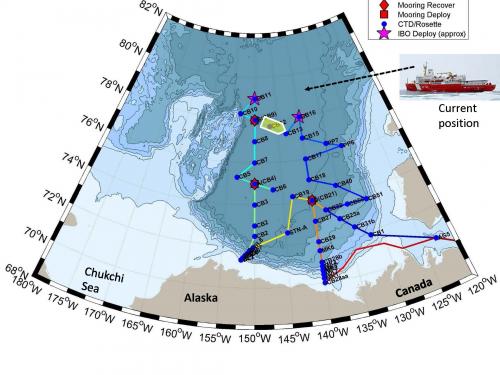
MooringAn anchor or weight attached to the sea floor used to hold a scientific instrument in place. Operations
MooringAn anchor or weight attached to the sea floor used to hold a scientific instrument in place. ops is a fairly long drawn out operation since there is both a recovery and a redeployment involved. The first thing that has to be done is LOCATING the station which is like finding a needle in a hay stack. But the coordinates of the mooring are known because they were recorded last year (always good to write stuff like that down). The next step involves essentially communicating with the mooring station's sub-surface buoy and getting the ship really close to the station. Next, communication with the release device located some 3800 meter below the surface has to be established. When everything on deck is ready to go the signal is sent to the release device for the anchor cable to be released from the anchor weights. If everything goes as planned, the big yellow sub-surface buoy bobs to the surface... and low and behold today it did!
The next step is to get a rope on the buoy itself. This involves lowering someone in a basket off the side of the ship with a tethered hook mounted to a long pole. The object of the game is to hook the hook through one large eyelets mounted on the buoy. Once that happens the retrieval can begin. First the buoy is hauled aboard and then gradually the various instruments that are positioned below the buoy are brought aboard and disconnected. For the scientists involved in those instruments, which have been sitting out for almost a year, they represent a gold mine of data. Most are very eager to get the data downloaded to see what was going on for the past twelve months.
The final step in the recovery process involves the retrieval of the 2 1/2 miles of cable which has to be wound onto cable spools and finally the hauling aboard of the cable-end floats and the release mechanisms. All the equipment is then lowered into the hold and work is begun on preparing it for redeployment in about 10-12 hours.
To a chemistry geek, one of the interesting things that returns to the surface along with all the instruments is the "sacrificial anodes". In sea water (which is an aqueous solution of several salts) corrosion of metals takes place readily because of the small electrical currents that develop as a result of the differences in reactivity of various metals. So to prevent the metals that make up the equipment and instruments from corroding, a piece of a highly reactive metal is attached to the other metals and it is allowed to corrode. This "saves" the other metals from certain chemical death. The only thing that happens in response to the sacrificial anode corroding is the deposition of dissolved metals in the sea water onto the surface of the metal surfaces of the equipment – generally not harmful to the equipment. Below is a couple of photos of sacrificial anodes retrieved from the mooring.
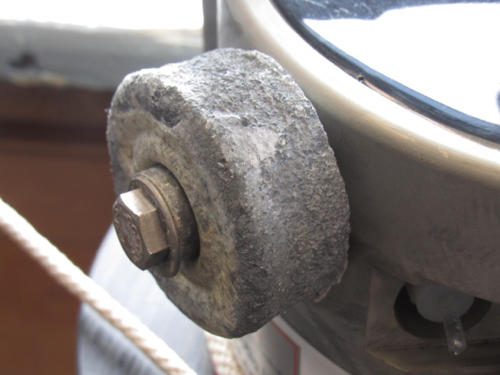
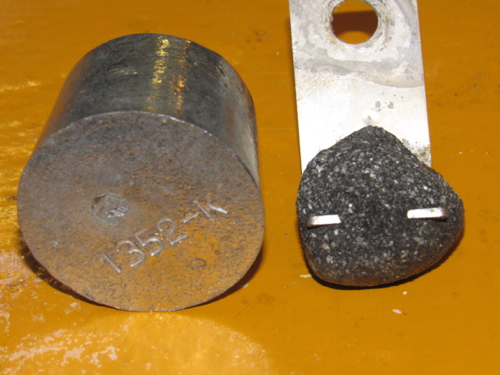
Chemistry Timeout
So there is a relationship then between carbon dioxide and pH. Since carbon dioxide can dissolve in water and then reacts with water to form carbonic acid which then dissociates and eventually forms H30+ ions, it follows that an increase in CO2 will cause a decrease in pH because the solution is getting more acidic. Since CO2 is a gas the only way to increase the concentration of CO2 dissolved in water is to first increase the concentration of CO2 in the air that is in contact with the solution. In chemistry speak we refer to it as increasing the partial pressure of CO2 (pCO2) which is the pressure that the CO2 exerts if you were to separate it from all the other gasses in the air. This is the basics behind what is known as Ocean Acidification which we'll get to next time.
Scenes From Around the Ship
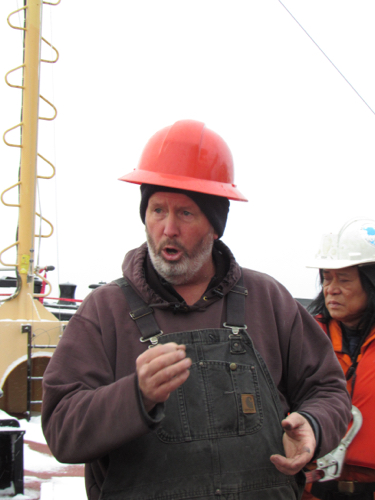
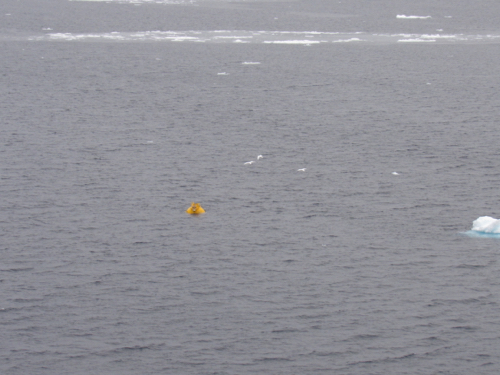
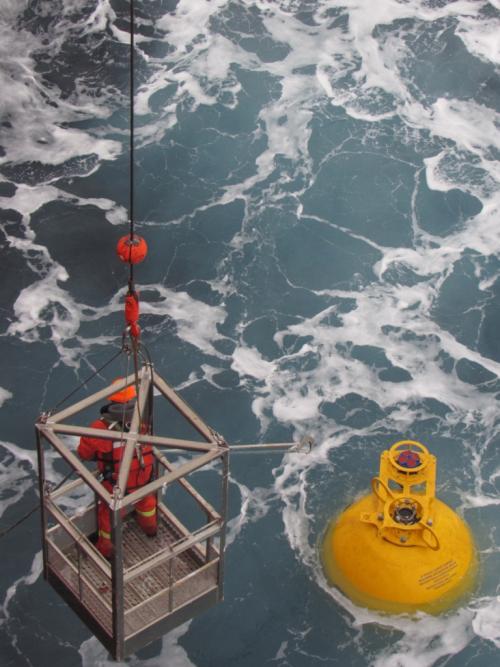
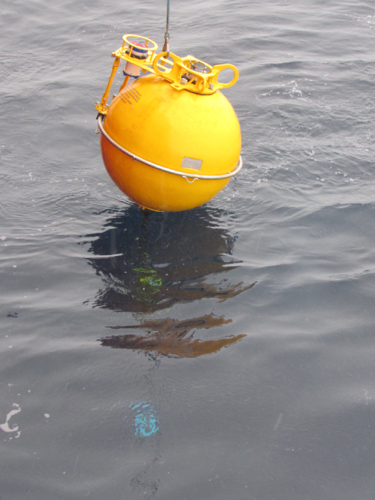
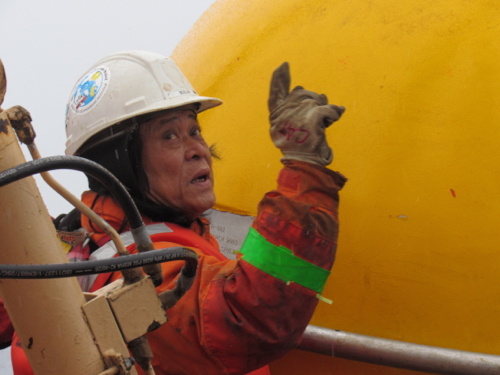
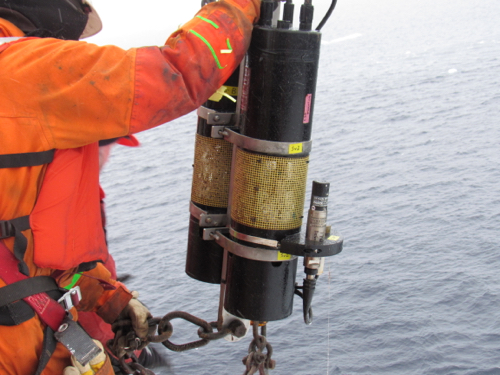
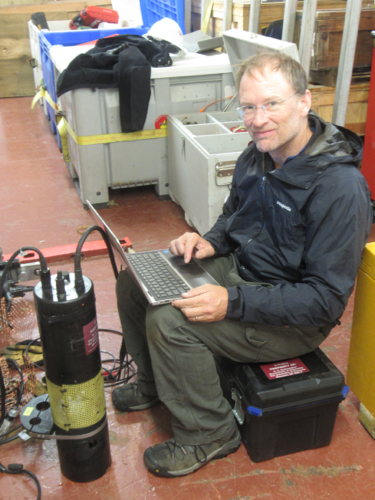


Comments